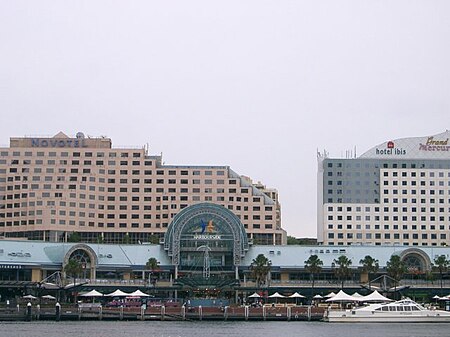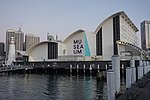Harbourside Shopping Centre
1988 establishments in AustraliaDarling HarbourShopping centres in SydneyShopping malls established in 1988

Harbourside is a shopping centre in Darling Harbour, close to the Sydney Central Business District. It is located next door to the new International Convention Centre with views of the city's skyline.
Excerpt from the Wikipedia article Harbourside Shopping Centre (License: CC BY-SA 3.0, Authors, Images).Harbourside Shopping Centre
Pyrmont Bridge, Sydney Sydney
Geographical coordinates (GPS) Address Website External links Nearby Places Show on map
Geographical coordinates (GPS)
| Latitude | Longitude |
|---|---|
| N -33.871967 ° | E 151.198886 ° |
Address
Harbourside Shopping Centre
Pyrmont Bridge
2000 Sydney, Sydney
New South Wales, Australia
Open on Google Maps








